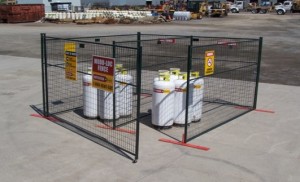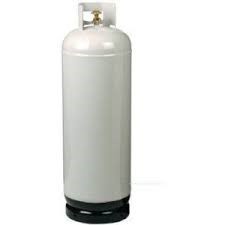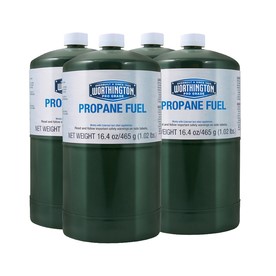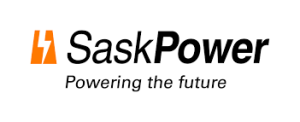This is the 1st revision to Bulletin G-04-11-ABSA which describes the requirements related to the use of tanks designed for 200 PSIG.
Tag Archives: B149.2
Alberta Municipal Affairs, Safety Services Issues Revision to Bulletin Related to LPG Storage Tank Installation Requirements
This is the 1st revision to Bulletin G-02-11 which describes the requirements related to the installation of propane storage tanks.
Alberta Municipal Affairs, Safety Services Issues Revision to Bulletin Related to Temporary Heat for Construction Sites
This is the 2nd revision to Bulletin G-08-01-B149.1/B149.2 which describes the requirements associated with the use of construction heaters and torches at construction sites. The revision addresses how changes to the 2015 edition of the B149.1 and B149.2 affect these requirements.
Alberta Municipal Affairs, Safety Services Adopts 2015 Versions of B149 Codes
SaskPower Releases Updated Code of Practice Related to B149.2
SaskPower Issues Bulletin Adopting 2015 Versions of B149 Codes
Incorporating B149 Code Changes Into Daily Operations
This article, related to incorporating B149 code changes into daily operations, first appeared in the 2015 Nov/Dec edition of Propane Canada Magazine.
My last few articles have provided information and discussed the ramifications of the regulatory impact the 2015 editions of the fuels and pressure vessels codes and provincial regulations will have on the propane industry. I like to believe that one of the purposes of these articles is to provide information on the regulatory regime as it develops so that company owners and users of the relevant code and regulations can be proactive rather than being reactive to new requirements.
This got me to thinking that it is great to provide this information but what does a person do with it once they have received it? If the information ends with the reading of the article and no further steps are taken, then the regulatory impact will result in a non-compliant position subject to the legal means available for enforcement of the codes and regulations by the Authority Having Jurisdiction.
Knowledge
I learned long ago that knowledge, and the ability to translate that knowledge into workable solutions, is key to being proactive and keeping one step ahead of the game. I would, therefore, hope that my articles provide the trigger for readers to take the next steps.
Steps might include identifying areas requiring additional or new development of policies and procedures, as well as to identify training initiatives necessary for employees to continue to complete their tasks in an efficient, cost-effective, and safe manner.
Training Requirements
Training is very vital in any company or organization that aims at progressing. Training simply refers to the process of acquiring the essential skills required for a certain job. It targets specific goals, such as understanding a process or operating a certain machine or system.
It is common knowledge that a properly trained person becomes more informed about procedures for the various tasks he or she must complete and that the person’s confidence is also boosted by training and development. This confidence comes from the fact that the per-son is fully aware of his/her roles and responsibilities. It also helps the person to carry out the duties in a better way and even find new ideas to incorporate into the daily execution of duties.
Legalese Clauses
 Regulations are written in what I describe as “legalese” which means that the lay-man’s clause wording developed and accepted by the working Technical Committees is reviewed and possibly edited by lawyers to ensure that the clause requirement meets the minimum standard required for enforcement by the Authorities Having Jurisdiction. This sometimes ends up with the clause not being quite as clear or concise as it was when the technical committee first developed the clause and therefore makes it difficult for the worker in the field to feel comfortable interpreting the requirement.
Regulations are written in what I describe as “legalese” which means that the lay-man’s clause wording developed and accepted by the working Technical Committees is reviewed and possibly edited by lawyers to ensure that the clause requirement meets the minimum standard required for enforcement by the Authorities Having Jurisdiction. This sometimes ends up with the clause not being quite as clear or concise as it was when the technical committee first developed the clause and therefore makes it difficult for the worker in the field to feel comfortable interpreting the requirement.
This is where the policies, procedures, and training come into play by ensuring, whether a person is a technician, fuel delivery person or plant operator, that each person in that position gains similar skills and knowledge. This brings each position to a higher uniform level, making the workforce more reliable in completing the task correctly the first time.
More Than Having a New Code
When one understands the requirements for uniform regulatory knowledge, the legalese of the written clauses, and the need for new technical knowledge, the need for effective training becomes evident. The training of technicians, fuel delivery personnel and plant operators is just not as simple as giving those persons a copy of the latest code and provincial regulations.
Recap of 2015 Regulatory Impact
While there have been numerous changes within the 2015 code editions, there are three primary regulatory initiatives which will require propane company owners and users of the codes and regulations to develop and/or edit existing policies and procedures. These changes will also require training of staff to ensure they can correctly complete the tasks required for the company to meet its regulatory compliance obligations for 2016 forward.
(1) Pressure Relief Valve (PRV) Change Out
As previously stated in my May/June 2015 article on this subject, it is my opinion that this requirement is most likely going to be the most challenging regulatory requirement the propane industry has faced in its history. This single requirement will put a tremendous strain on the industry’s resources, people, equipment, and finances.
Even before there is any field activity on the replacement of PRVs it is essential the company have in place the necessary policies and procedures and trained staff to perform the actual field work.
The task of replacing PRVs is not as straightforward as it sounds and can be-come quite complicated and complex when you have to consider the logistics of:
- keeping customers supplied with propane;
- exchanging the customer’s propane tank (which could require evacuation of the product on-site);
- dealing with tank components which may not operate as designed or are not available to evacuate the pro-pane from the tank;
- transporting tanks from the plant to the customer site and then back to the plant;
- evacuation of the propane from the tank at the plant; and finally
- replacing the PRV.
This means that companies should already be diligently working on developing their policies and procedures, identifying relevant training programs, and scheduling the training of technicians, helpers, and bulk truck drivers as soon as possible.
(2) Construction Site Cylinder Storage and Use
 There are extensive new requirements that affect how propane cylinders are stored and used on construction sites. As with the PRV change out, companies will be required to provide new/edited policies and procedures and additional training for cylinder delivery personnel.
There are extensive new requirements that affect how propane cylinders are stored and used on construction sites. As with the PRV change out, companies will be required to provide new/edited policies and procedures and additional training for cylinder delivery personnel.
Several provinces and territories automatically adopt the latest edition of the code once it is published. For example, the B149.2 Propane Storage and Handling Code was published by CSA in Au-gust 2015. Provinces and territories that have not already adopted the 2015 code will be doing so in 2016. This means that some delivery personnel delivering to construction sites for the 2015/2016 winter construction heating season must be trained in the new requirements. In addition, the company must have in place policies and procedures describing how the Company will deliver propane cylinders to the construction site.
(3) New Propane Facility Maintenance Requirements
The purpose of the new clauses in the code is to provide a minimum standard for the operation and maintenance of propane facilities and equipment. The new clauses apply to tank systems, filling plants, container refill centres and other facilities where liquid propane is piped to a vaporizer or process. Because there are many variables, it is not possible for the Code to prescribe a set of operation and maintenance procedures that will be adequate from the standpoint of safety in all cases without being burdensome and, in some cases, impractical. The proposed clauses establish a baseline or minimum standard.
The maintenance procedures are to cover testing, inspection, monitoring, and documenting of the equipment, its repair, and general upkeep.
There is also a requirement for persons who perform maintenance on facility propane systems to be trained in the hazards of the system and in the maintenance and testing procedures applicable to the facility.
Once again, this requirement is already in place in some provinces and territories and will be coming into force 2016 in those provinces and territories that do not automatically adopt the latest edition of the code.
These new requirements will require some companies to develop new policies and procedures with respect to maintenance of the propane facilities described and others to edit the policies and procedures to address the new requirements. Also, the training component is new within the code and therefore will require the identification of relevant training programs and the scheduling of personnel to take the training.
In Conclusion
It is my hope that this article will be the catalyst for the reader to become proactive and to take the next necessary steps to ensure that his or her company develops the policies and procedures, identifies the training initiatives required, and schedules the training of staff to meet the new regulatory obligations.
The Fuels Learning Centre has developed an extensive training program covering all of the aspects listed above for evacuating propane tanks regardless of location and the change out of the PRV. The course is currently being studied by several Authorities Having Jurisdiction across Canada for their review and comment, as is the process for all new courses related to regulated activities. It is anticipated this course will be available for our Instructors to conduct training on or be-fore January 1, 2016.
Also, we have developed a new course to address the requirement for persons who perform maintenance on propane facility systems to be trained in the hazards of the system and in the maintenance and testing procedures applicable to the facility. We expect this course to be available for our Instructors on or before January 1, 2016, as well.
Our training courses for cylinder delivery and installation of construction heaters already provide the 2015 code requirements your staff and customers will require in order to complete their duties and keep the company in compliance for the 2015/2016 winter construction heating season.
Government of Prince Edward Island Updates the Boilers and Pressure Vessels Act
Government of Prince Edward Island Updates Boilers and Pressure Vessels Regulations
Ontario Code Adoption Documents
This article, related to Ontario code adoption documents, first appeared in the 2015 Sep/Aug edition of Propane Canada Magazine.
I normally try to write articles on the regulatory and technical issues which apply equally across all provinces and territories. However, with the new 2015 B149 series of codes being published by CSA this past August, many of the Authorities Having Jurisdiction are now in the process of developing code adoption documents to adopt the 2015 versions. I will report on the activities of each Authority Having Jurisdiction as they progress towards the adoption of the 2015 codes.
 As previously reported, Ontario issued an Ontario Code Adoption Document (CAD) in August 2014 which continued the adoption of the 2010 editions of CSA-B149.1 and CSA-B149.2. The purpose of this 2014 CAD was to not only continue the adoption of the 2010 Codes in Ontario but to adopt as early as possible many of the 2015 Code requirements that Ontario felt were important to put in place as soon as possible. The 2014 CAD became effective October 1, 2014.
As previously reported, Ontario issued an Ontario Code Adoption Document (CAD) in August 2014 which continued the adoption of the 2010 editions of CSA-B149.1 and CSA-B149.2. The purpose of this 2014 CAD was to not only continue the adoption of the 2010 Codes in Ontario but to adopt as early as possible many of the 2015 Code requirements that Ontario felt were important to put in place as soon as possible. The 2014 CAD became effective October 1, 2014.
The next round of Ontario amendments to the CSA-B149.2 Code will be released January 1, 2016. The 2016 CAD drops the 2015 Code requirements listed in the 2014 CAD.
The 2016 CAD not only adopts the B149.2 but revokes the requirements listed in the 2014 CAD and provides new requirements for the following:
- Adoption of Field Approval Code and Mobile Food Unit Approval Code for appliances on those units that are not approved;
- New requirements for labelling of tanks mounted on OEM and converted vehicles for motive power and for RV for supplying appliances;
- Exemption of vehicular protection for cylinders of 20 lb. or less stored in cabinets;
- New requirements for inspection of tanks and inspection/replacement of relief valves; and
- Annex Q is added for requirements for use of non-refillable cylinders in classrooms in schools.
Primary Amendments
The following are the primary Code amendments/edits that will appear in the 2016 CAD.
Cylinder Exchange
 New definition to clarify what a cylinder exchange is, for the purpose of licensing and the respective requirements. Cylinder Exchange means a type of a propane cylinder handling facility where propane in refillable cylinders are sold or other-wise distributed to an end user, with cylinders stored in no more than four (4) cabinets and each cabinet contains no more than 500 lb. of propane.
New definition to clarify what a cylinder exchange is, for the purpose of licensing and the respective requirements. Cylinder Exchange means a type of a propane cylinder handling facility where propane in refillable cylinders are sold or other-wise distributed to an end user, with cylinders stored in no more than four (4) cabinets and each cabinet contains no more than 500 lb. of propane.
Cutting or Welding Applications
When TC-4BWM18 cylinders, with a propane capacity of 40 lb. (18 kg) or less, used in cutting or welding applications are requalified, they are exempt from having a cylinder valve that does not permit the flow of propane until a positive seal has been achieved. When requalifying TC-4BWM18 cylinders, valve replacement may be made by using a valve outlet conforming to the CGA 510 standard, not requiring a positive seal and with a PRV set at 405 psi.
Refueling Equipment Indoors
This CAD requirement is to require all equipment fueled with propane, including ice resurfacing machines, to be subjected to the same requirements. Therefore, clause 5.11.3 in the Code is revoked.
The new clause states that when equipment, such as an industrial tractor, lift truck or ice resurfacing machine, is fueled by propane and is used indoors, the area shall be ventilated in accordance with the requirement of Table 5.1 as found in the code.
Approval Labels for Recreational Vehicles (RVs)
RVs which have permanently mounted propane tanks for fueling the appliances will have to have two labels of approved design, affixed by a licensed conversion centre certificate holder. The labels are to be affixed on the rear window or side window nearest the fill connection, at the door latch, or in the glove compartment.
The CAD requires that the appliances be inspected every 5 years in accordance with the B149.1 and the inspection reports are to be provided to the propane conversion centre. The copy of the inspection report must be no older than 90 days when received by the propane con-version centre.
To inspect an RV will require that a valid G1, G2, RV1 certificate holder inspect the appliances and the inspection of the tank and associated liquid piping and components be inspected by a holder of a valid Internal Combustion Alternate Fuel Technician, Propane (ICE-P) certificate.
Also, the inspection of the tank and associated liquid piping and components is to be carried out at a registered vehicle conversion centre.
Moving propane cylinders from one level to another
The use of passenger escalators is removed as this is not an acceptable practice.
Vehicle Impact Protection
Vehicle impact protection will not be required for protection of 20 lb. propane cylinders where the cylinders are kept in lockable ventilated cabinets of metal construction.
It was submitted by the industry group that it is proven cylinders are well protected with cages of metal construction. The same requirements were adopted in IFC and in the process of adoption in NFPA.
Filling cylinders under 100 lbs. from bulk trucks
 The filling of cylinders under 100 lbs. from bulk trucks shall comply with Annex P of the CAD.
The filling of cylinders under 100 lbs. from bulk trucks shall comply with Annex P of the CAD.
Annex P requires that:
- Drawings are submitted and that each location is approved;
- A letter from the local municipality stating that the refueling of propane cylinders does not contravene any applicable zoning bylaws;
- Calculations submitted confirming that Branch Standard No. 9 has been met; and
- Written procedures are available for filling cylinders from a bulk truck.
Tank Inspections
All installed tanks will require a recorded tank inspection every 10 years, in accordance with National Board Inspection Code (NBIC) inspection and acceptance criteria.
Pressure Relief Valve (PRV) Inspections
The CAD provides clauses to adopt the requirements in the new edition of B51 and allows a grace period of seven (7) years for tanks greater than 2,500 USWG and ten (10) years for tanks of 2,500 USWG or less. Each operating company should have a plan and start acting as soon as these requirements come into effect.
Pressure relief valves (PRV) of tanks are to be visually inspected periodically to ensure that there are no impediments that will prevent them from operating properly. The frequency of the periodic visual inspection depends on the operating environment and the manufacture’s recommendation.
The PRV inspection is to be recorded at a minimum interval of every five (5) years. The record must include the date of in-spection and the person carrying out the inspection.
The inspection will ensure that:
- the outlet and, where applicable, weep hole is open and free to discharge;
- there are no signs of corrosion, cracks, debris, tampering, or other mechanical damage;
- there is no leakage;
- the discharge is directed to a safe location, and any piping installed is adequately supported and does not obstruct the discharge;
- the seal, where applicable, has not been broken; and
- the rain cap, where applicable, has been installed.
Tanks of greater than 2,500 USWG must have the relief valves rebuilt/certified or replaced every 10 years. All overdue relief valves are to be rebuilt/certified or replaced by January 1, 2023.
Tanks of 2,500 USWG or less must have the relief valves rebuilt/certified or replaced every 25 years. All overdue relief valves are to be rebuilt/certified or re-placed by January 1, 2026.
Tank owners must develop a plan that provides an achievable pathway for full compliance with the PRV replacement requirements for tanks regardless of size within the implementation periods stated above (January 1, 2023 & January 1, 2026). The plan must be developed by July 1, 2016.
Within a ten (10) year period from the implementation of these requirements (seven [7] years for tanks of greater than 2500 USWG), each owner should keep records of the PRV for each in-service tank, including:
- the name of the PRV manufacturer;
- the date on which the PRV was put into service;
- an approval stamp – the PRV must have the UL code symbol on it in accordance with the applicable design code (ANSI/UL 132);
- a record that the set pressure of the PRV meets the specified requirements for the tank;
- a record that the relief capacity in SCFM air conforms to the appropriate rate for the size of the tank; and
- records of this information shall be held by the distributor and may be kept in hard copy or electronic format.
*Not all valves will have a nameplate. If there is no nameplate the markings are stamped into the body of the valve. All valves should be marked with the manufacturer’s name or an abbreviation, the manufacturer’s part number, set pressure, capacity, date or date code for the year of manufacture, and the UL rating code symbol.
Use of Non-Refillable Propane Cylinders in Laboratories/Classrooms in Schools, Colleges, and Universities
 The CAD provides an Annex Q to address the use of non-refillable cylinders in classrooms.
The CAD provides an Annex Q to address the use of non-refillable cylinders in classrooms.
In Closing
In this article I have attempted to raise awareness on the issues I believe will most impact the Ontario propane industry. There are a few requirements within the 2016 CAD that are carryovers from the previous 2014 CAD and some requirements with slight amendments to them.
It is, therefore, important that each person who works under the B149 series of codes obtain a copy of the final, approved 2016 CADs for propane storage & handling, natural gas installation, and vehicle conversion codes to become familiar with their requirements. The CADs, when issued, will be available on the TSSA website.




